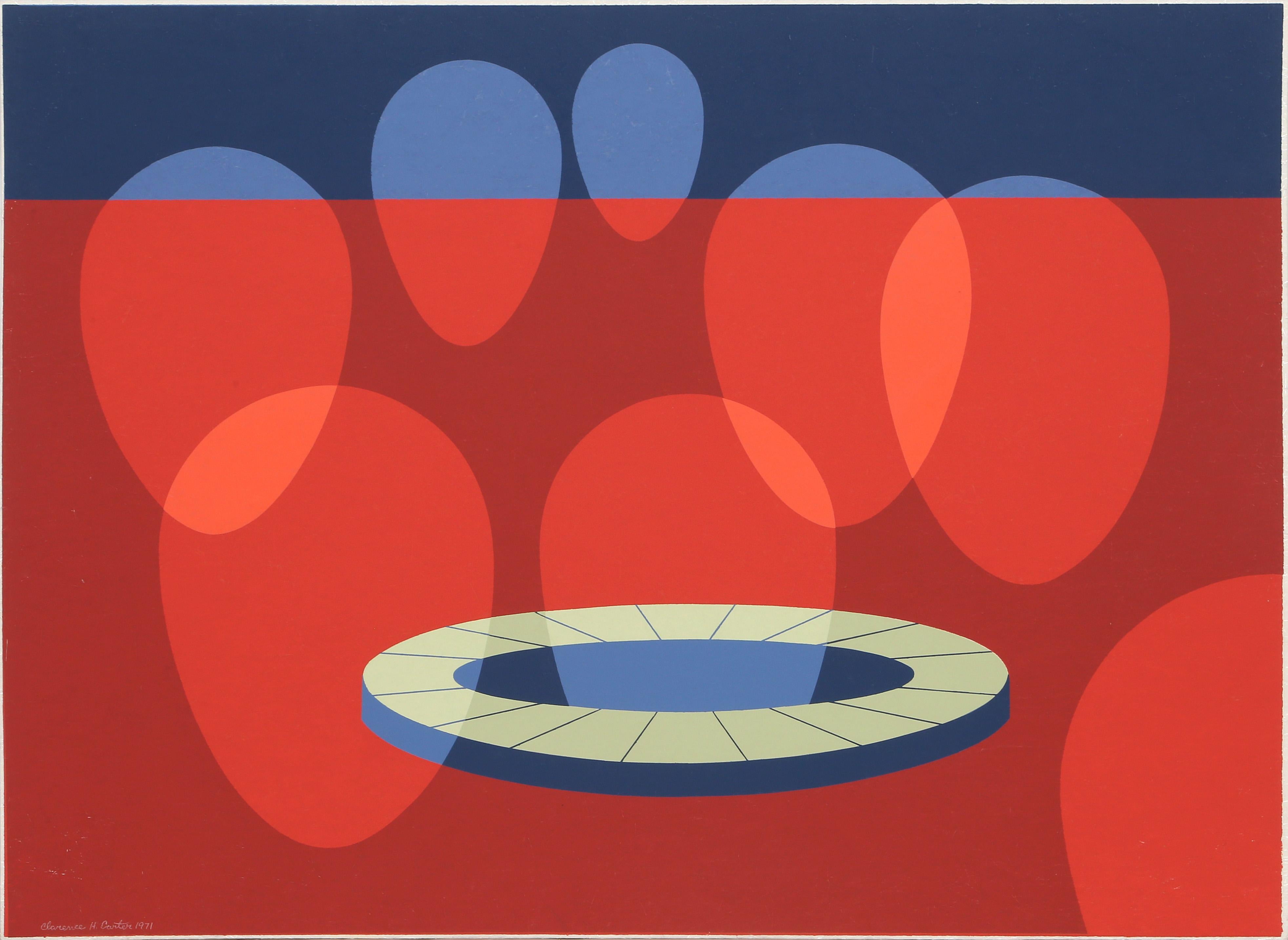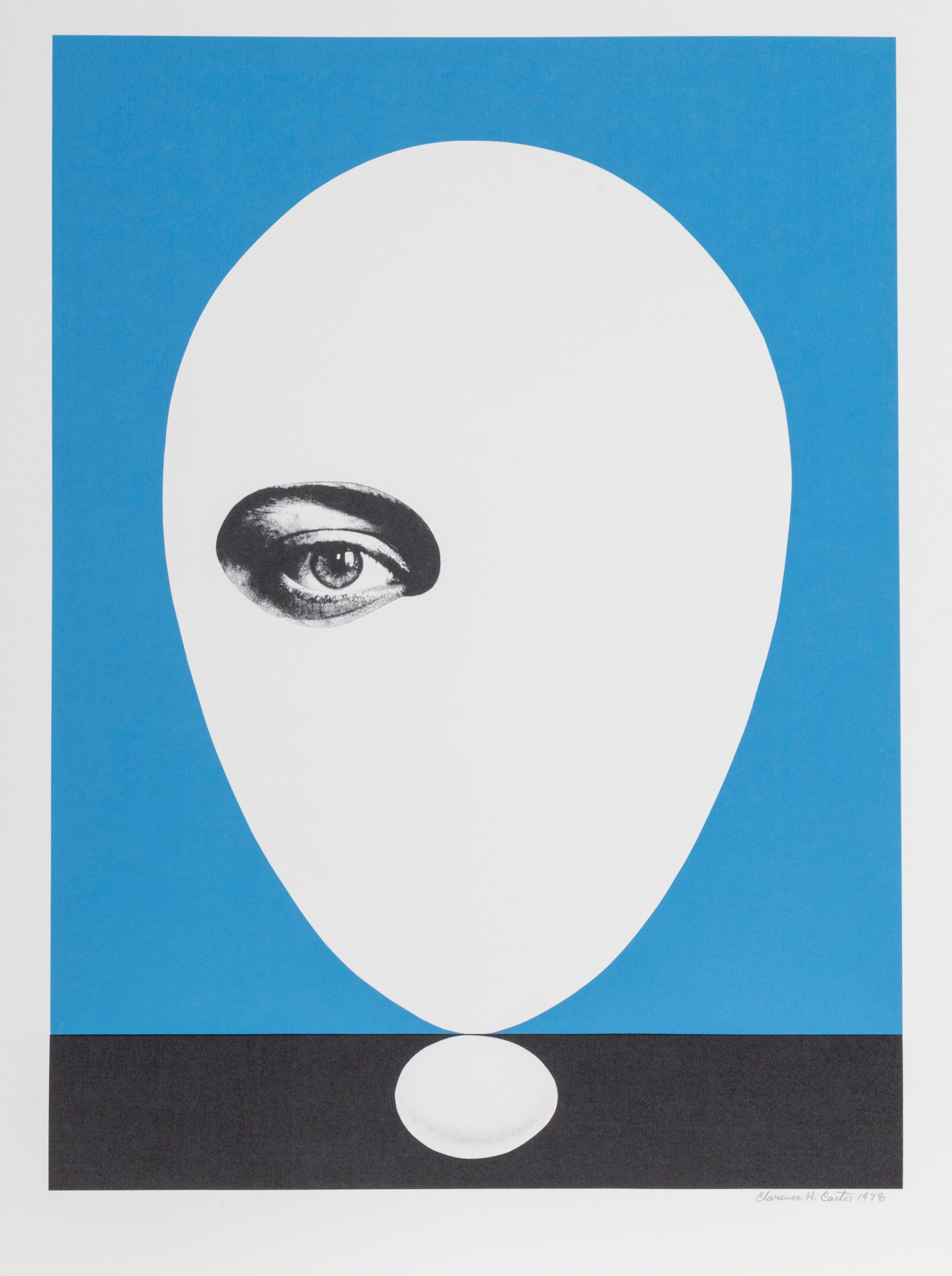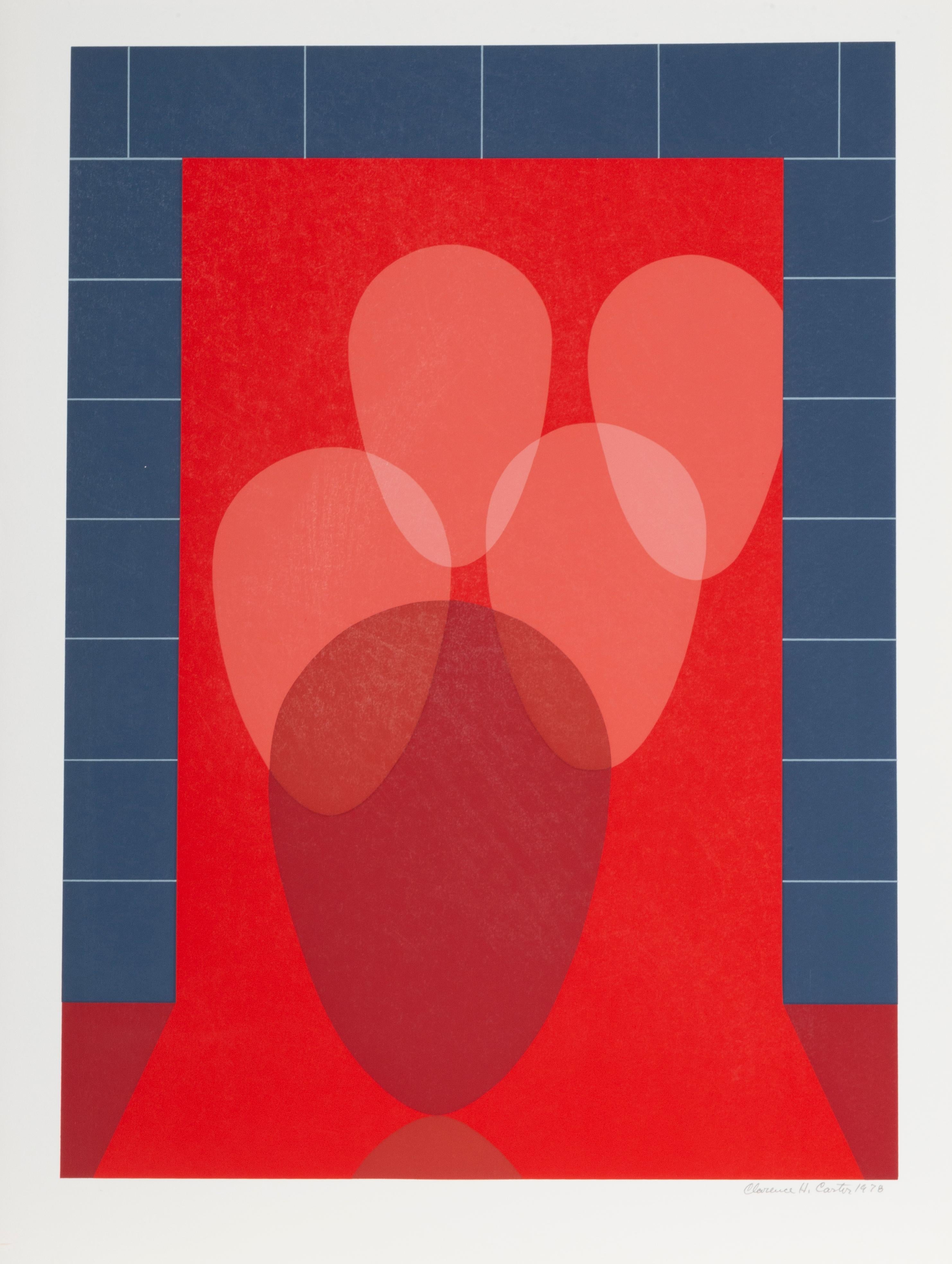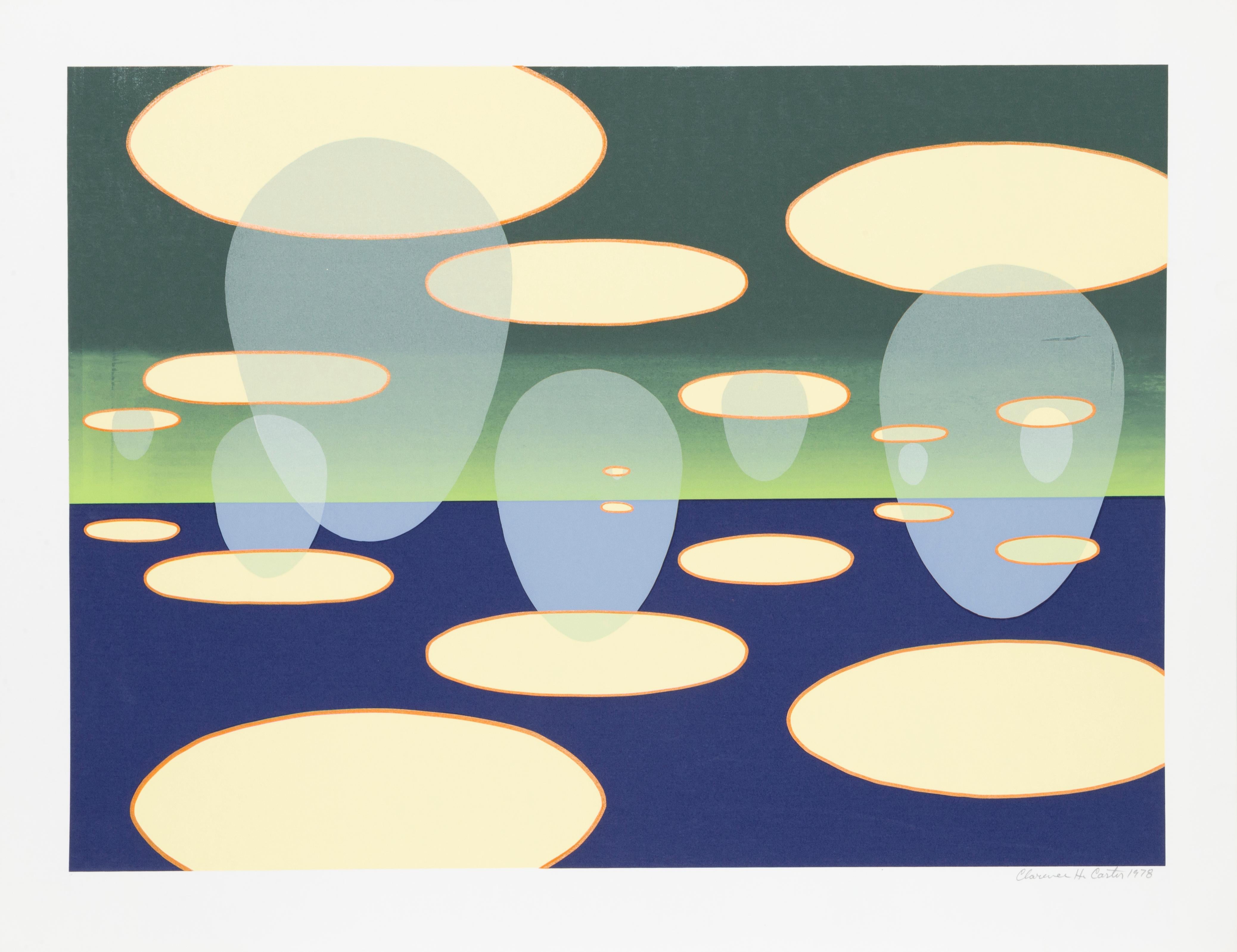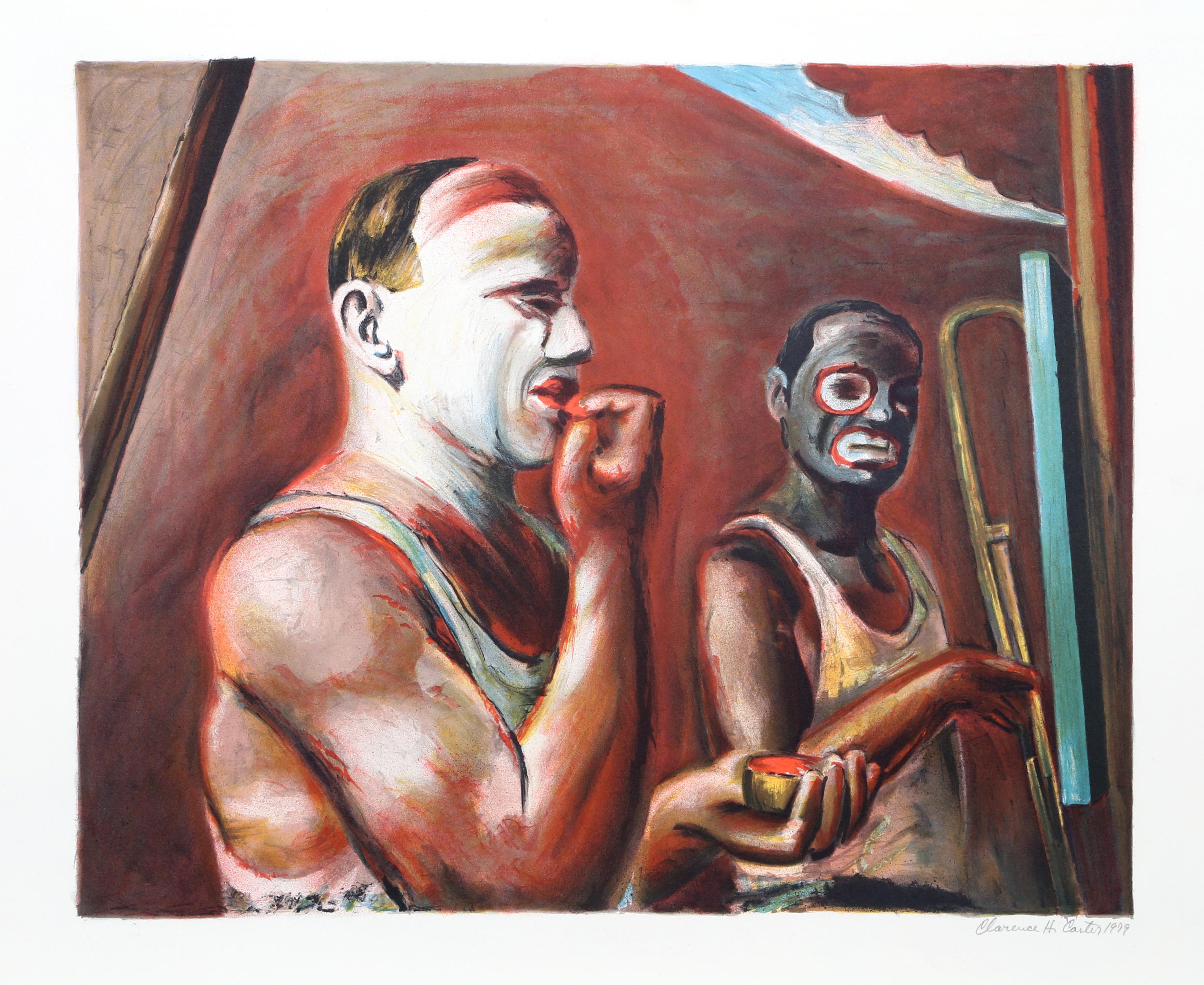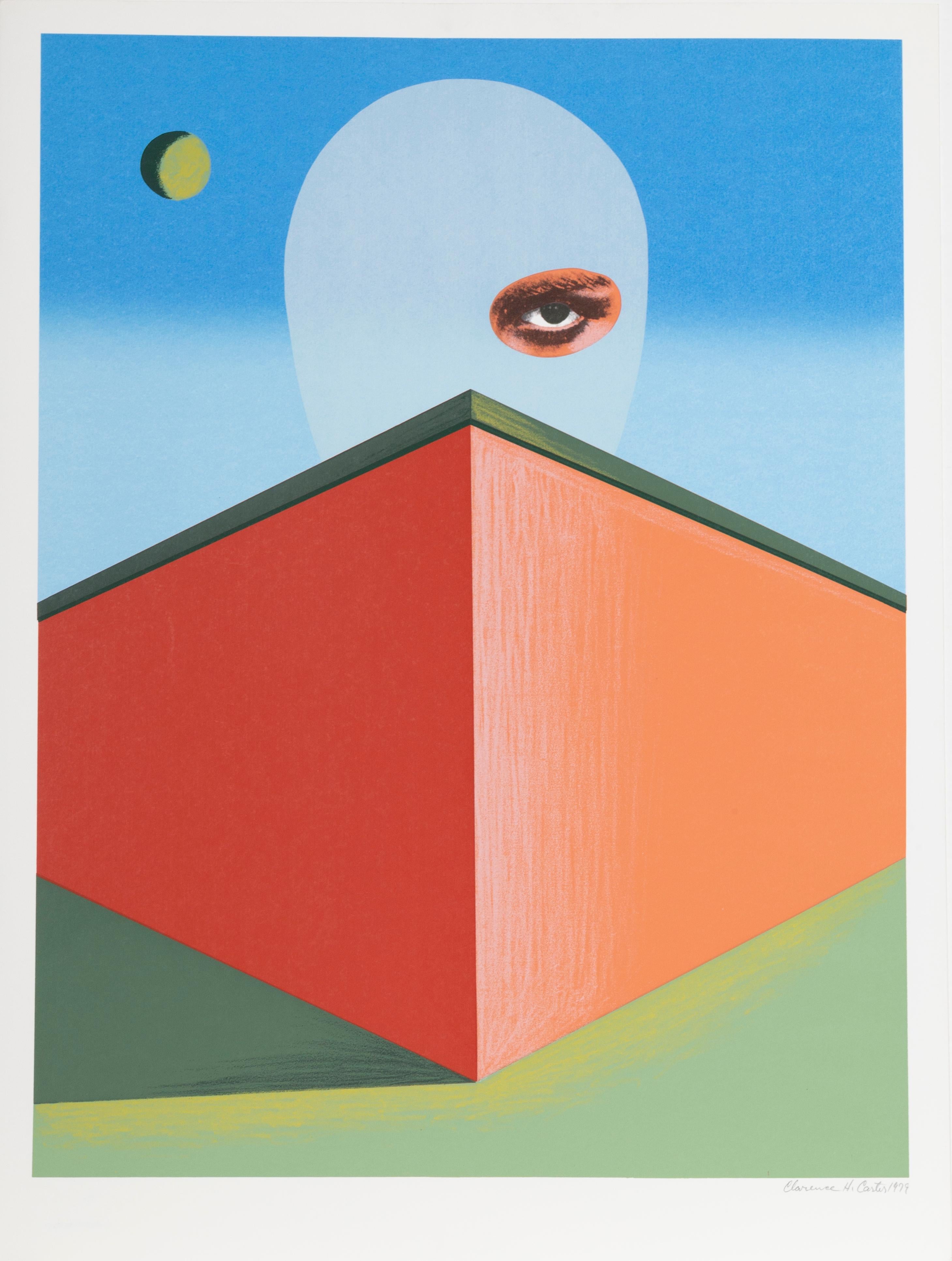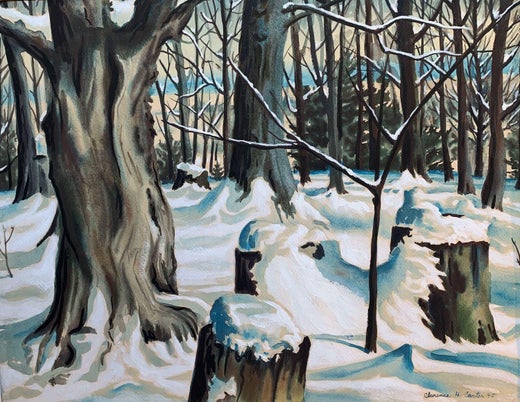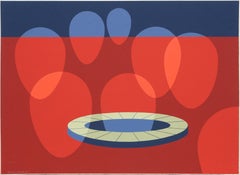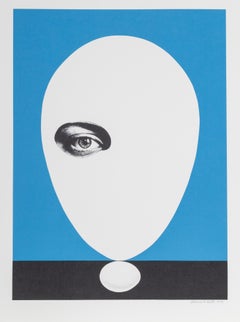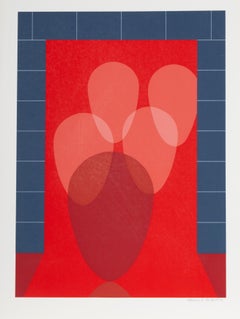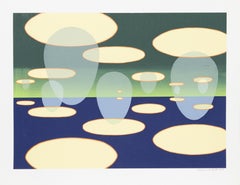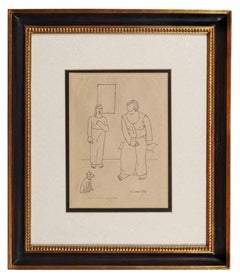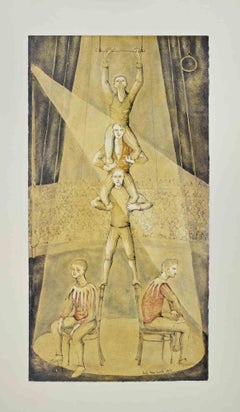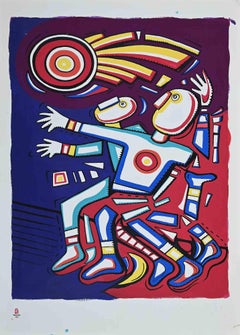Items Similar to Acrobats, Signed Modern Screenprint by Clarence Carter
Want more images or videos?
Request additional images or videos from the seller
1 of 7
Clarence Holbrook CarterAcrobats, Signed Modern Screenprint by Clarence Carter1979
1979
$900
£697.62
€793.47
CA$1,289.84
A$1,414.27
CHF 739.34
MX$16,938.57
NOK 9,326.60
SEK 8,748.36
DKK 5,927.71
About the Item
Acrobats
Clarence Holbrook Carter
American (1904–2000)
Date: 1979
Screenprint, signed and numbered in pencil
Edition: AP 30
Size: 40 x 22 in. (101.6 x 55.88 cm)
- Creator:Clarence Holbrook Carter (1904-2000, American)
- Creation Year:1979
- Dimensions:Height: 40 in (101.6 cm)Width: 22 in (55.88 cm)
- Medium:
- Movement & Style:
- Period:
- Framing:Framing Options Available
- Condition:
- Gallery Location:Long Island City, NY
- Reference Number:Seller: RO64591stDibs: LU46615896722
Clarence Holbrook Carter
Clarence Holbrook Carter achieved a level of national artistic success that was nearly unprecedented among Cleveland School artists of his day, with representation by major New York dealers, scores of awards and solo exhibits, and streams of praise flowing from pens of the top art critics. Over the course of his 60+ year career Carter evolved from an exceptionally fine American Scene painter capable of evoking deep reservoirs of mood, into an abstractionist with a strongly surrealist bent. While his two bodies of work seem at first to be worlds apart, owing to their different formal vocabularies, they, in fact, explore virtually the same subject: the nexus between life and death and the transition from earth to spirit. The early work finds its expressive power through specific people, events, and landscapes—most of which are drawn from his experiences growing up in the river town of Portsmouth, Ohio—while the later work from the 1960s on evokes potent states of being through pure flat shape, color and form that read as universals. As his primary form he adopted the ovoid or egg shape, endowing it with varying degrees of transparency. Alone or in multiples, the egg moves through Carter’s landscapes and architectural settings like a sentient spirit on a restless quest. Born and raised in southern Ohio along the banks of the mercurial Ohio River and its treacherous floods, Carter developed a love of drawing as a child, and was encouraged by both his parents. He was self-directed, found inspiration all around him, and was strongly encouraged by the fact that his teenage work consistently captured art prizes in county and state fairs. Carter studied at the Cleveland School of Art from 1923-27, where he trained under painters Henry Keller, Frank Wilcox and Paul Travis. Returning to Cleveland in 1929, Carter had his first solo show, and through Milliken taught studio classes at the Cleveland Museum of Art from 1930-37. In 1938, he moved to Pittsburgh to teach at the Carnegie Institute of Technology until 1944. Carter’s American Scene paintings of the ’30s and ’40s, which launched his artistic star, are the works for which the artist remains best known. During and immediately after World War II, Clarence Carter realized his attraction to bold pattern, dramatic perspective and eye-catching hard-edged design was a poor fit with the prevailing style of Abstract Expressionism. Fortunately, these same hallmarks of his style were prized within the realm of commercial art. Around 1964 Carter acknowledged a need to break from the confines of representational painting. Once Carter had found a potent symbol in the egg, he used it to create an astounding body of imagery for the rest of his life. Among the most ambitious of all his later paintings were his Transections, a theological term meaning to cross, specifically between life and death.
About the Seller
4.9
Platinum Seller
Premium sellers with a 4.7+ rating and 24-hour response times
Established in 1979
1stDibs seller since 2014
3,158 sales on 1stDibs
Typical response time: 1 hour
- ShippingRetrieving quote...Shipping from: Long Island City, NY
- Return Policy
Authenticity Guarantee
In the unlikely event there’s an issue with an item’s authenticity, contact us within 1 year for a full refund. DetailsMoney-Back Guarantee
If your item is not as described, is damaged in transit, or does not arrive, contact us within 7 days for a full refund. Details24-Hour Cancellation
You have a 24-hour grace period in which to reconsider your purchase, with no questions asked.Vetted Professional Sellers
Our world-class sellers must adhere to strict standards for service and quality, maintaining the integrity of our listings.Price-Match Guarantee
If you find that a seller listed the same item for a lower price elsewhere, we’ll match it.Trusted Global Delivery
Our best-in-class carrier network provides specialized shipping options worldwide, including custom delivery.More From This Seller
View AllJoseph and His Brothers, Surrealist Screenprint by Clarence Holbrook Carter
By Clarence Holbrook Carter
Located in Long Island City, NY
Artist: Clarence Holbrook Carter, American (1904 - 2000)
Title: Joseph and his Brothers
Year: 1971
Medium: Screenprint on Scintilla paper, sign...
Category
1970s Abstract Abstract Prints
Materials
Screen
Balancing Act, Surrealist Screenprint by Clarence Holbrook Carter
By Clarence Holbrook Carter
Located in Long Island City, NY
Artist: Clarence Holbrook Carter, American (1904 - 2000)
Title: Balancing Act
Year: 1976
Medium: Serigraph, signed and numbered in pencil
Edition: 200, A...
Category
1970s Surrealist Abstract Prints
Materials
Screen
Fiery Furnace, Surrealist Screenprint by Clarence Holbrook Carter
By Clarence Holbrook Carter
Located in Long Island City, NY
Artist: Clarence Holbrook Carter, American (1904 - 2000)
Title: Fiery Furnace
Year: 1978
Medium: Serigraph, signed and numbered in pencil
Edition: 200, AP 30
Paper Size: 35 x 26 inc...
Category
1970s Surrealist Abstract Prints
Materials
Screen
Eschantos 31, Screenprint by Clarence Holbrook Carter
By Clarence Holbrook Carter
Located in Long Island City, NY
Artist: Clarence Holbrook Carter, American (1904 - 2000)
Title: Eschantos 31
Year: 1978
Medium: Serigraph, signed and numbered in pencil
Edition: 200, 30 AP
Size: 26 in. x 33.5 in. (...
Category
1970s Surrealist Abstract Prints
Materials
Screen
Clowns Making Up, Modern Lithograph by Clarence Holbrook Carter
By Clarence Holbrook Carter
Located in Long Island City, NY
Artist: Clarence Holbrook Carter, American (1904 - 2000)
Title: Clowns Making Up
Year: 1979
Medium: Lithograph, signed and numbered in pencil
Edition: 200, AP 30
Image Size: 19 x 23....
Category
1970s Contemporary Figurative Prints
Materials
Lithograph
The Watcher, Surrealist Screenprint by Clarence Holbrook Carter
By Clarence Holbrook Carter
Located in Long Island City, NY
Artist: Clarence Holbrook Carter, American (1904 - 2000)
Title: The Watcher
Year: 1977
Medium: Screenprint, signed and numbered in pencil
Edition: 200, 30 ...
Category
1970s Surrealist Abstract Prints
Materials
Screen
You May Also Like
The Acrobats -Lithograph by Carlo Carrà - 1922
By Carlo Carrà
Located in Roma, IT
The Acrobats is an original modern artwork realized by Carlo Carrà in 1922.
Lithograph on paper.
Hand signed and dated on the lower margin.
Titled on th...
Category
1920s Modern Figurative Prints
Materials
Paper, Lithograph
Circus : The Jugglers - Original handsigned lithograph
By Camille Hilaire
Located in Paris, IDF
Camille HILAIRE
Circus : The Jugglers
Original lithograph
Handsigned in pencil
On Vellum 74 x 53 cm (c. 30 x 21 in)
Excellent condition
Category
1970s Modern Figurative Prints
Materials
Lithograph
Acrobats - Drawing by Cecilia Ferro Caporilli - 1963
Located in Roma, IT
Ink and watercolor on paper realized by Cecilia Ferro Caporilli in 1963.
Hand signed and dated .
Very good condition.
Category
1960s Contemporary Figurative Drawings and Watercolors
Materials
Paper, Ink, Watercolor
Athleticism - Vintage Offset Poster by Alfredo Sosabravo - 2008
By Alfredo Sosabravo
Located in Roma, IT
Athleticism, is a vintage offset poster realized after Alfredo Sosabravo in occasion of the 2008 Olympic Games in Beijing.
Official stamp of the Olympic Organising Committee.
Goo...
Category
Early 2000s Contemporary Figurative Prints
Materials
Offset
Acrobats Painting by Georges Sardi
Located in Atlanta, GA
Modernist "Acrobats" painting by Georges Sardi, French, circa 1960s. It is executed in oil on canvas and retains it's original minimalist wood frame. It ...
Category
Vintage 1960s French Mid-Century Modern Paintings
Materials
Canvas, Wood, Paint
Art Deco "Gymnastics" Print by Uzelac, for 1932 Olympics
By Milivoy Uzelac
Located in Philadelphia, PA
Brilliantly conceived and printed in rich tones of burnt sienna and charcoal, this print by Milivoy Uzelac, shows the strong influence of Cubism, Neo-Classicism and Art Deco stylizat...
Category
Vintage 1930s American Prints
Materials
Ink, Paper
Read More
Romare Bearden’s Humanity Infuses His Bright, Bold Art
Through collage, painting and printmaking, the artist foregrounded Black life in America in revolutionary new ways.
Chryssa’s 1962 Neon Sculpture Was Way ahead of the Art-World Curve
By working with lettering, neon and Pop imagery, Chryssa pioneered several postmodern themes at a time when most male artists detested commercial mediums.
More Ways To Browse
Salvador Dali Heart
Salvador Dali Moses
Sandu Liberman Lithograph
Scott Jacobs
Shepard Fairey Lithograph
Shepard Fairey War
Signed Mucha Lithograph
Skate Decks Keith Haring
Sophy Brown
Southwest Vintage Posters
Sticky Fingers Album
Sunset Peter Max
Tammy Wynette
Tarkay Lithograph
Tessa Beaver
The Physiognomy Ear
Van Strydonck
Venus In Furs
